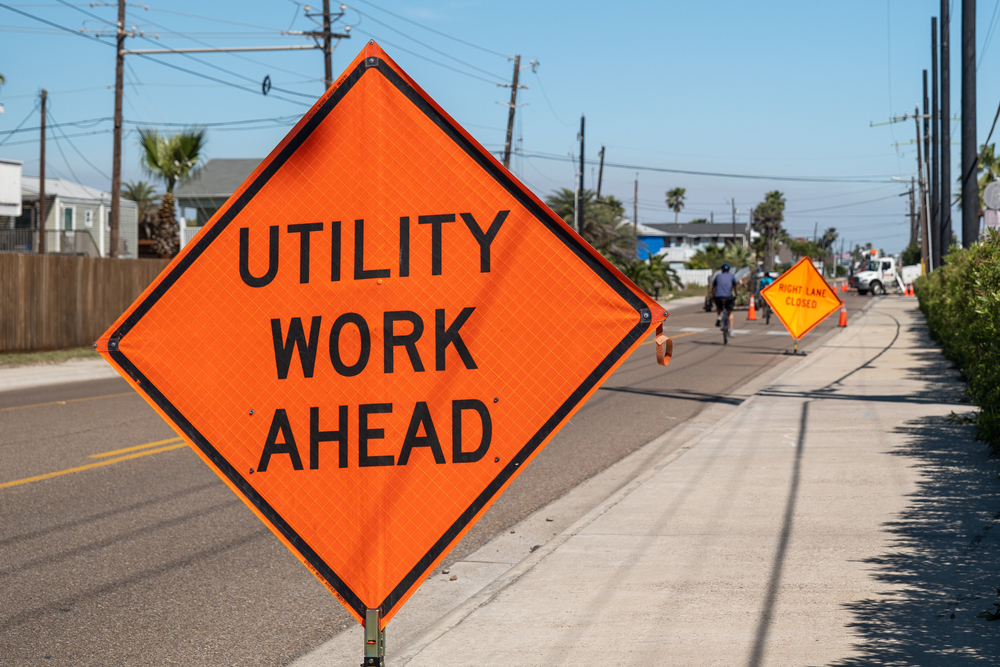
As our roads and highways undergo construction or maintenance work, it is crucial to ensure the safety of drivers and construction workers. Smart work zones have emerged as a solution to mitigate risks and improve work efficiency in these areas. This article will examine how smart work zones function and how technology and tools enhance traffic flow, worker productivity, and safety.
How Do Smart Work Zones Work?
Smart work zones use technology to monitor traffic, provide real-time information, and adjust traffic patterns to optimize traffic flow and reduce congestion. The following are some of the crucial components of smart work zones:
Dynamic Messaging Signs (DMS)
Digital signs in smart work zones, known as dynamic messaging signs (DMS), provide drivers with up-to-the-moment updates on road conditions and other relevant information. The information displayed can include speed limits in work zones, lane closures, detours, and other important information about the construction work ahead. These signs are strategically placed in areas easily visible to drivers, such as on the side of the road, overhead, or on portable units.
The messages displayed on DMS are updated in real-time, which helps drivers make informed decisions about their route and driving behavior. For example, if there is a sudden traffic jam or an accident in the work zone, the DMS can alert drivers to slow down, change lanes, or take a detour to avoid the incident. This timely information helps to reduce the risk of accidents, injuries, and fatalities in work zones.
Traffic Cameras
Another important part of smart work zones is traffic cameras. These cameras monitor traffic flow and detect accidents, congestion, and other events that can impact traffic flow. The information gathered from traffic cameras is then used to adjust traffic patterns, reduce congestion, and improve traffic flow.
In addition, traffic cameras can provide drivers with real-time information about the work zone’s current conditions. For example, the cameras can alert drivers to slow down or take an alternate route if heavy congestion is ahead. These alerts help to reduce the risk of accidents and improve safety in work zones.
Speed Sensors
Speed sensors can track vehicles traveling through a work zone. This data is then used to adjust the speed limit in work zones to improve safety and reduce the risk of accidents. Speed sensors can also be used to detect drivers who are exceeding the speed limit and alert them to slow down.
In addition, speed sensors are particularly useful in work zones where the speed limit may be reduced to ensure worker safety. By using speed sensors, work zone managers can ensure that drivers are obeying the posted speed limit, which reduces the risk of accidents and improves safety in work zones.
Incident Management Systems
Whenever there is a disruption to traffic flow in a construction zone, incident management systems are activated to identify the source of the problem. These systems use sensors, cameras, and other devices to detect incidents. They also provide real-time information to drivers and work zone personnel.
By detecting incidents quickly, incident management systems can reduce the response time for emergency services and improve the overall safety of the work zone. These systems can also inform drivers about alternative routes, which helps reduce congestion and improve traffic flow.
Vehicle Detection Systems
Vehicle detection systems count the number of vehicles passing through the work zone. This information is then used to adjust the traffic flow and optimize the work zone to reduce congestion and improve safety. For example, if there is heavy traffic in one lane, the vehicle detection system can adjust the traffic signals to give that lane more green time, which helps to reduce congestion and improve traffic flow.
Vehicle detection systems can also detect over-height or overweight vehicles that may be a safety hazard in the work zone. Managers of work zones can take the necessary action to ensure the safety of employees and drivers by detecting these vehicles.
Takeaway
Smart work zones use various technologies and tools to ensure safer and more efficient work zones. These technologies work together to provide real-time information to drivers, optimize traffic flow, and reduce the risk of accidents, injuries, and fatalities in work zones. Worksafe Traffic Control Industries is a leading provider of certified DMS that meet MUTCD standards and can provide them promptly. Worksafe Traffic Control Industries also provides the highest quality in every order, ensuring that smart work zones are equipped with the most effective messaging signs available.

